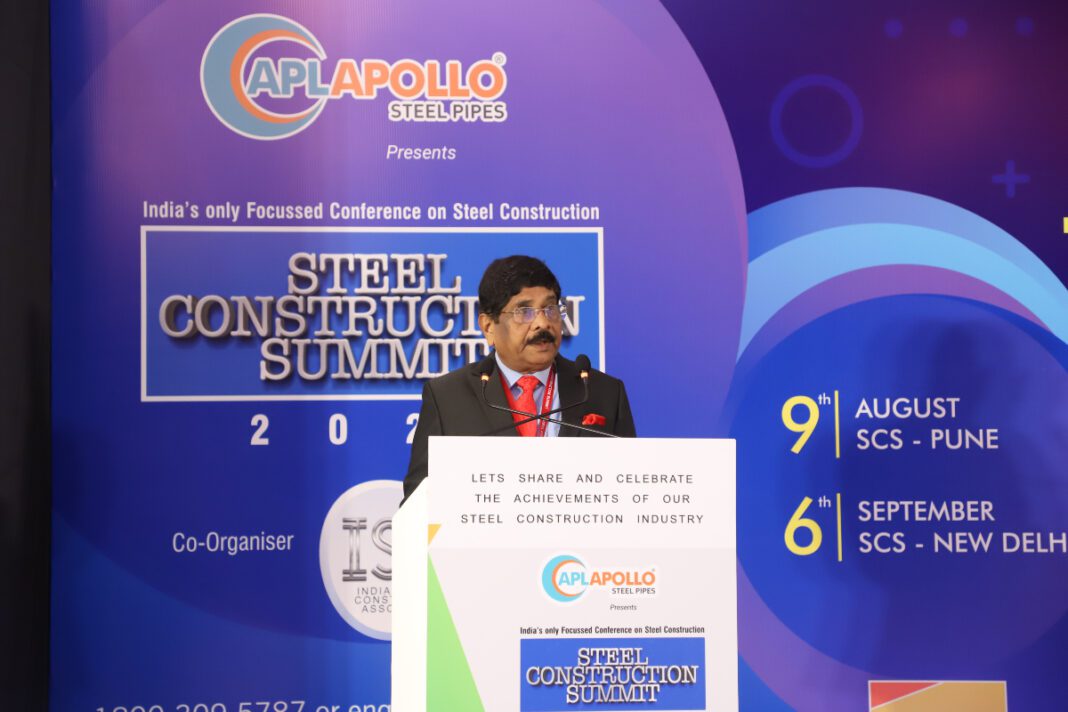How long have you been practicing as an architect and what motivated you to pursue this profession?
I passed from JJ College of Architecture in 1976. I wanted to gain experience working with different architects in the country and internationally. In those years, I worked on projects across the world, knowing technology and the profession. This motivated me to start my own firm in 1985. Since I was a kid, I would travel with my brother, who was an electrical engineer, in and around Mumbai on his various projects. I met noted architects like Charles Correa which helped develop my ambition.
What is your design philosophy in tackling architectural projects?
The philosophy emerges from the location, culture, and what the project is. When you want to evolve your own philosophy, it has to have a personal touch which comes from within. We want to apply it with innovative ideas and technology.
How do you balance the functional and aesthetic aspects of any project?
Good design is one that is functionally the fittest. Structural networks can be taken care of but to convert this into aesthetic elements is the key. Adding creativity in elements like the interior spaces, and facades, incorporating water and light to make the spaces vibrant and lively. A few basic principles in architecture help to maintain this balance, having a repetitive rhythm and flow to any space would instantly liven it up.
In today’s world, sustainability is a crucial aspect of architecture. How do you integrate sustainable principles into your work?
Well, today’s world is all about eco-friendly practices. We are increasingly focusing on green initiatives because nature is undoubtedly changing around us. We need to embrace sustainable construction, using natural materials. It’s like they say that food belongs to the place it comes from. Just as Western food may not be suited to India, our construction practices should be aligned with our local environment. If we can integrate this natural approach into our living spaces, these structures will last longer. With such an approach, issues like carbon emissions and environmental degradation could be minimised, ensuring a proper ecological balance. I am confident that many issues related to biodiversity and other environmental concerns can be resolved, allowing us to maintain a sustainable environment.
What are some current architectural trends or innovations that you find particularly exciting?
Today’s is a world of innovation. Customers now want something that has never existed before, and we are moving closer to that phenomenon. There’s more of a flowing rhythm, more waves, more curves, rather than simple straight lines. This opens up various possibilities for forms and designs.
Earlier, we probably never ventured into these areas because there was no technological support. But now, we are talking about biomimicry, parametric architecture, and other concepts that go beyond rigid verticals and horizontals. We are exploring circles, curves, mixed curves, and more. These innovations are driven by advancements in artificial intelligence, which is set to revolutionise the field. It’s going to be a very interesting journey ahead, in my opinion.
We are no longer confined to what we learned in our institutes. Instead, we must continuously study and adapt to the challenges of tomorrow, as they will reshape everything. For example, no one would have imagined tools that could create drawings, or even generate walkthroughs of spaces we are only imagining. These are challenges, but they are also opening the door to new ideas and creations.
How do the latest developments and trends impact architecture and how we build?
Well, advancements in trends, to my knowledge, happen individually. It all depends on how the world is evolving and coming closer together. Today, we can simply Google things and find out what’s happening in Hong Kong, Singapore, Australia, or other places, and consider whether we can replicate that in our own country. This is how a trend starts.
A trend, as I mean it, is a new idea that you introduce and popularise. If the idea is good, and the concept is strong, useful, functional, and aesthetically pleasing, I am sure it will become a trend. You can create a trend yourself, or you can develop one based on what’s happening across the world. I think this should be the flow of activities for any architect today.
How do you believe architecture can positively impact the community or society at large?
Architecture has been, I would say, a catalyst in the growth of a community and in defining the standard of living. Interestingly, the lifestyle factor is changing again. All of this needs to be observed by architects, as they are the ones who will build the communities of tomorrow.
I always say that when you build a space, whether it be in the form of a building, landscape, or interior design, you are designing it with a vision for at least 25 to 30 years. This means we are trying to build a community that will exist for the next 30 to 60 years. To define that community, I believe we need to study our own history, understand what is happening around the world, and develop our own philosophy. We also need to cultivate a visual sense to grasp what the progress of the community could be and how it can be mapped out.
What is your take on steel as a material in infrastructure and buildings?
Steel is incredibly versatile and monolithic by nature. One of its basic properties is that it can be easily and effectively twisted to suit all our needs and forms. There have been some discussions regarding its fire resistance. But I believe technology will definitely provide solutions where we can treat steel during its manufacturing process. I am confident that these current shortcomings will be resolved.
More and more research is being conducted on reducing carbon emissions from steel. Efforts are being taken to reduce that consumption by 30, 40, or even 50 per cent over time while improving the quality of steel. Enhancing the density of steel can be more useful in thinner applications. This would not only add to the beauty but also improve the workability of the steel itself.
I believe steel is an ingenious and useful material, and, it’s not just about steel but metals in general, such as aluminium and other composites that we may develop. These advancements could make metals even more useful than non-monolithic materials like concrete, which is a combination of many different materials. Concrete has issues like varying coefficients of expansion due to temperature changes, and porosity is also a big problem. In contrast, steel is a dense material, so these issues do not exist, and it has excellent tensile strength.
These are some of the qualities of steel that technology is enhancing. If we can develop solutions for building structures using steel alone, or perhaps in collaboration with other metals, we can create aesthetically pleasing buildings that meet the challenges of future communities.
What are some areas in steel construction you wish to explore in the future?
I’ve been working in various industries. Initially, I worked on five-star and luxury hotels, not only in India but abroad. I’m still waiting for a new, challenging hotel project to come along. Of course, I’ve also worked on a couple of small hospital projects, but I feel that designing a multi-specialty hospital is my dream. As for the hotel sector, there’s now a demand for me to work in a country like Madagascar, where they want to set up a World Trade Center and an Aerocity. Aerocities are full of hotels, which is something I would love to work on. And then there’s the towering World Trade Center, a place where the whole world will converge. So, it’s not just about India; it will also elevate India’s name on the global stage.
How do you foresee the architecture fraternity moving forward in the next decade?
Well, I believe the architecture fraternity has many opportunities and challenges, especially compared to when I graduated. I have spoken at various forums about how the whole world is now looking to South Asia for development. Most of Europe and America are already developed, with limited opportunities for growth. Whereas there are tremendous opportunities in growing countries like India. There are also countries around India, such as Bangladesh, as well as Vietnam and the Middle East.
In the past, we had to visit sites to execute work, but now, due to computerisation and digitisation, it’s possible to sit in your own office, wherever it may be, and still execute projects across the world. If the architect’s mindset is prepared for this, and if they have all the necessary tools and technologies, I’m sure the fraternity has a vast pathway ahead.
With the advent of various software tools, if architects can adopt these technologies, I am confident that they will inspire and enhance their mindsets and concepts. This will enable them to come up with new ideas and create something that has never existed in the world before.





